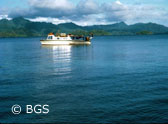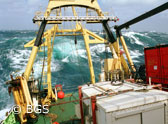Seabed habitat mapping standardisation
Seabed habitat mapping is mostly based on the assumption that the ecological value of an area is related to its abiotic characteristics (substrate type, topography and energy regime). To date, the Folk sediment classification (based on the percentage mud, sand and gravel), has been widely used to classify the substrate; however recent developments have shown that more accurate predictions of habitat or species occurrences can be made when the original grain size distribution curves are available. According to end-users' needs, the most appropriate grain size variables can then be chosen or calculated. In addition, topographical variables have become increasingly important for habitat modelling; their calculation and classification is still the subject of discussion.To improve the usefulness of habitat maps for end-users, Geo-Seas has developed 2 guidelines:
- Seabed habitat mapping - sediment characterization - January 2013
- Seabed habitat mapping - terrain characterization - January 2013
These guidelines aim to:
- Investigate the importance of sediment/terrain characterization within habitat mapping initiatives;
- Demonstrate the main methodological approaches and classification;
- Investigate how different resolutions of the data affect the sediment and/or terrain characterization (Case studies on 500-50-5m resolution);
- Provide recommendations on the parameters, resolution, formats, confidence, and data query tools to be used for habitat mapping.
The results have also been presented at a number of international conferences and meetings including: Netherlands Centre of Coastal Research. Texel, the Netherlands; GeoHab, Helsinki, Finland; May 2011, Human Footprint on the Seafloor, Brussels, September 2011 and Marine Aggregate Extraction and EU Directives, Bredene, Belgium, October 2011 and at GEOHAB, Orcas Island, USA, in May 2012.


